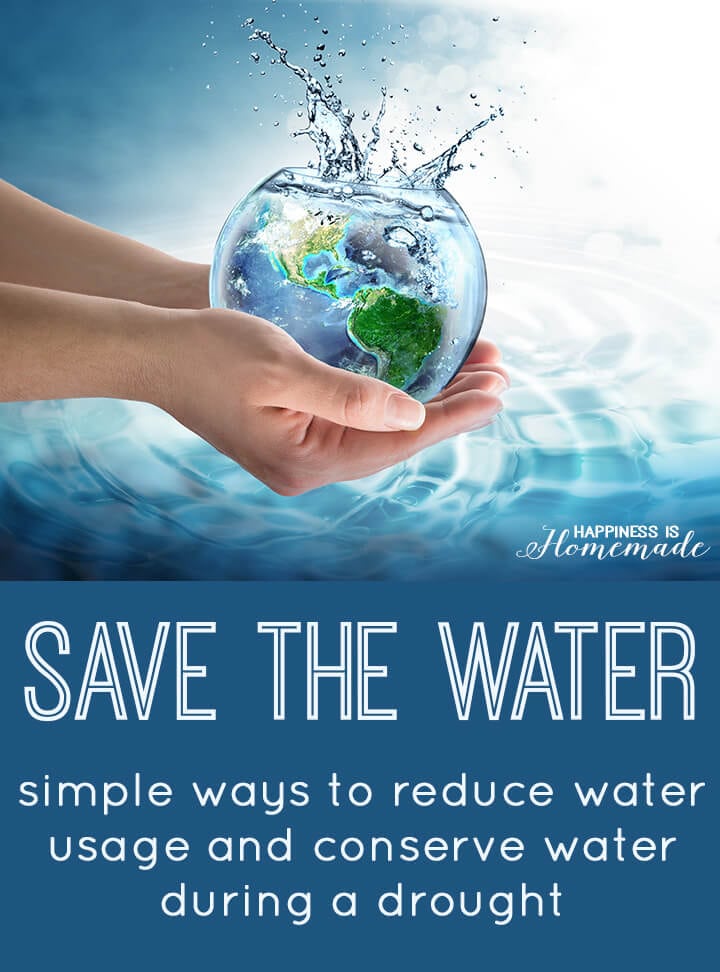By now I’m sure you’ve heard about the ongoing drought crisis in California. California is facing it’s 4th year of one of the most severe droughts in history, and there’s no end in sight. Even if you don’t live here in California, the gravity of the situation has gained enough national attention that concerned people all over the country are trying to find new and creative ways to help conserve water.
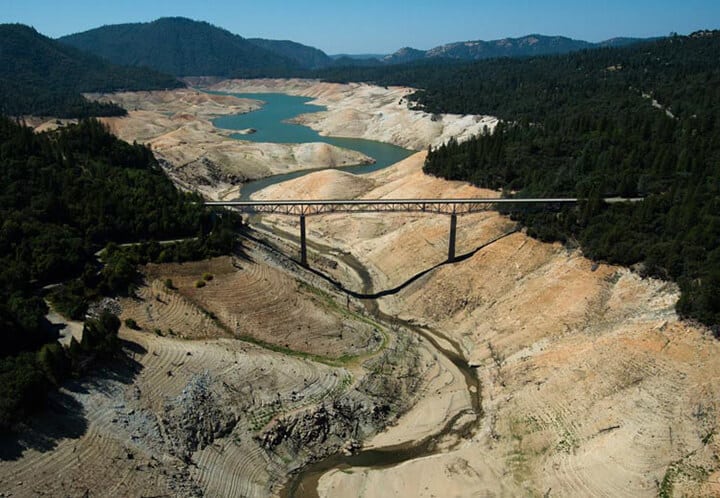
How did the California drought get so severe? Well, the simple answer is the lack of rain and snowfall over the past several years. Californians rely heavily on winter snowpack to resupply surface water streams and lakes. Because of a lack of winter storms and record high temperatures this past winter, snowpack in California is at an all-time low. Take a look at these photos taken by a Yosemite Conservancy webcam that show Half Dome on March 19 of each year from 2011 to 2015.
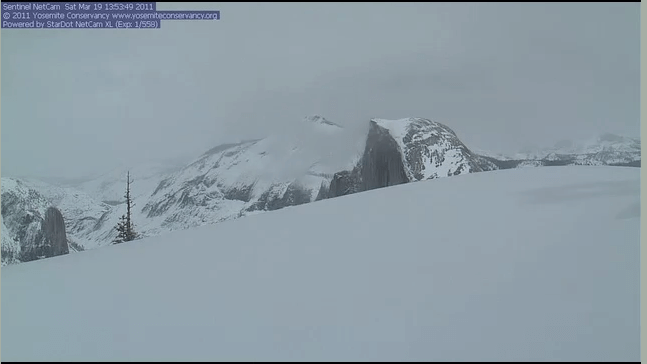 This photo from 2011 shows a “normal” amount of snowfall.
This photo from 2011 shows a “normal” amount of snowfall.
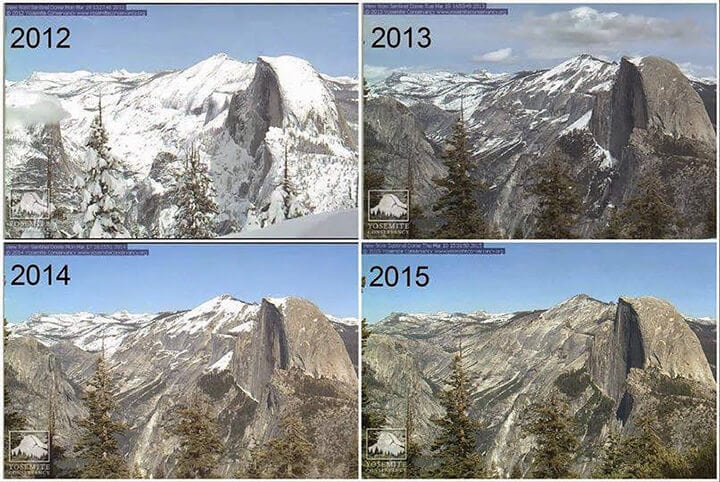 It’s quite obvious in these images that California has been steadily receiving snowfall levels that are nowhere near the necessary average amounts for the past several years. Without the required amount of snowfall, California’s surface water levels are currently FAR below normal, forcing us to once again turn to quickly diminishing groundwater aquifers below the surface.
It’s quite obvious in these images that California has been steadily receiving snowfall levels that are nowhere near the necessary average amounts for the past several years. Without the required amount of snowfall, California’s surface water levels are currently FAR below normal, forcing us to once again turn to quickly diminishing groundwater aquifers below the surface.
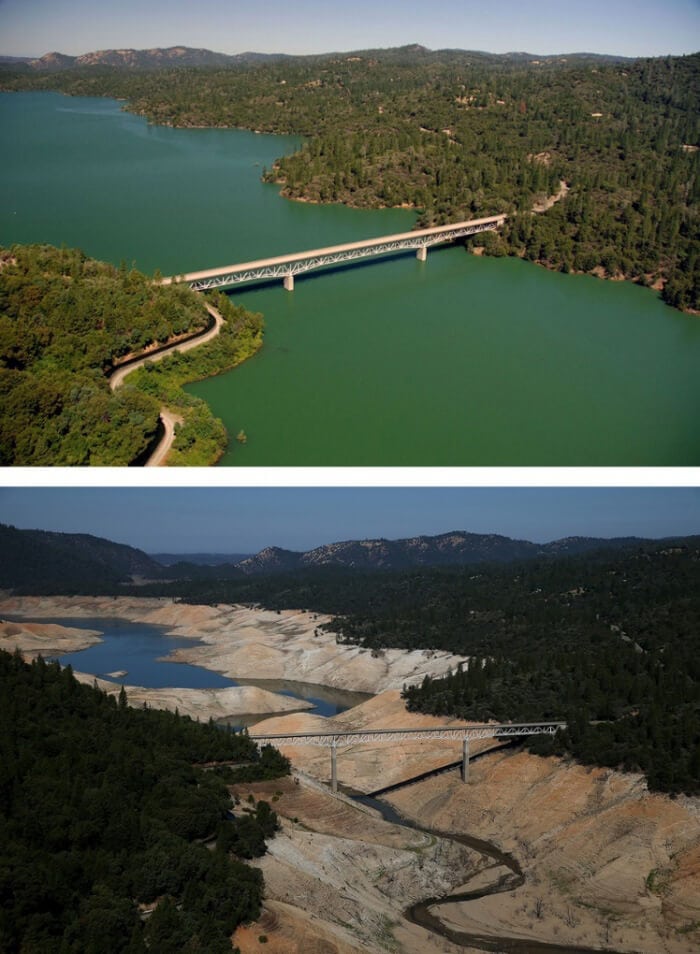
Mandatory water cuts have been imposed in an effort to conserve enough groundwater for California’s farmers. These farmers supply a sizeable majority of the fruits and vegetables that feed the entire United States (including nearly 90% of all US-grown broccoli, cauliflower, grapes, strawberries, avocados, artichokes, kiwis, dates, figs, olives, persimmons, pistachios, prunes, raisins, walnuts, almonds…the list goes on and on!). There’s no doubt about it – the situation in California is drastic, and it effects the entire country.
So, what can we do to help?
Everyone has heard the advice to take shorter showers, repair leaky faucets, and to turn off the sink while you brush your teeth. All of those are great suggestions, but there are even more ways that you can help to conserve water, too!
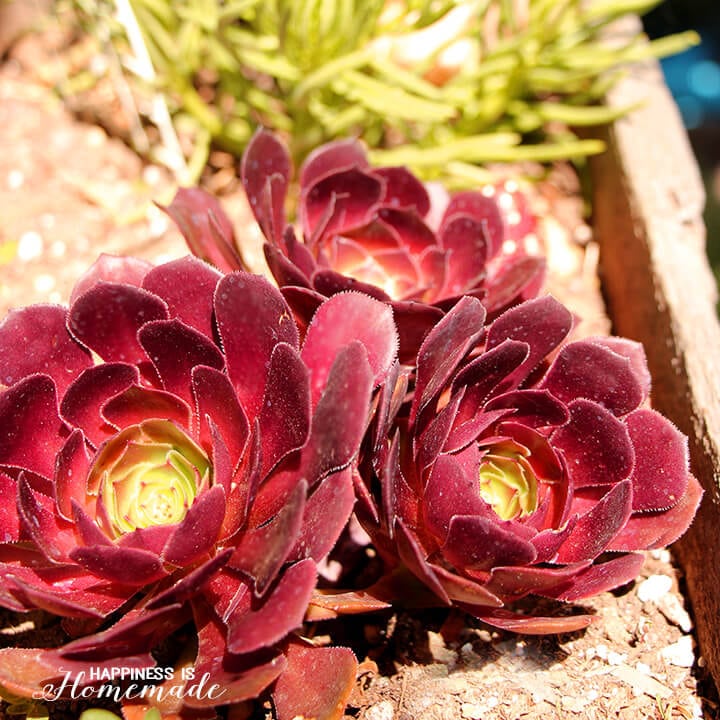 Consider replacing lawns and flowerbeds with drought tolerant ground covers and succulents that require considerably less water than their traditional counterparts.
Consider replacing lawns and flowerbeds with drought tolerant ground covers and succulents that require considerably less water than their traditional counterparts.
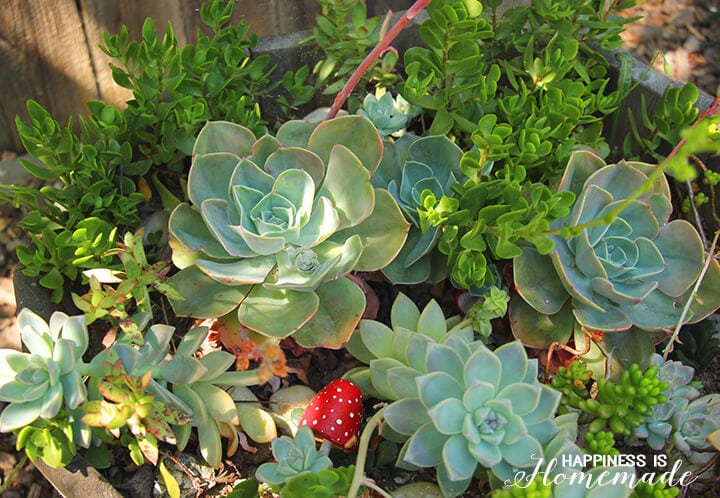 Adding a layer of mulch around plants will help to prevent evaporation, keep the plant’s roots moist for longer, and spread out the time between waterings.
Adding a layer of mulch around plants will help to prevent evaporation, keep the plant’s roots moist for longer, and spread out the time between waterings.
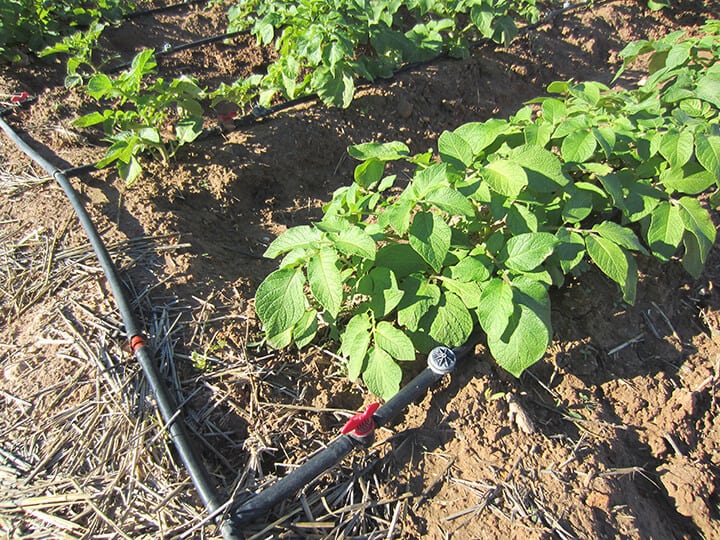 Studies show that a well-designed drip irrigation system can save 30-50% water when compared to standard watering methods.
Studies show that a well-designed drip irrigation system can save 30-50% water when compared to standard watering methods.
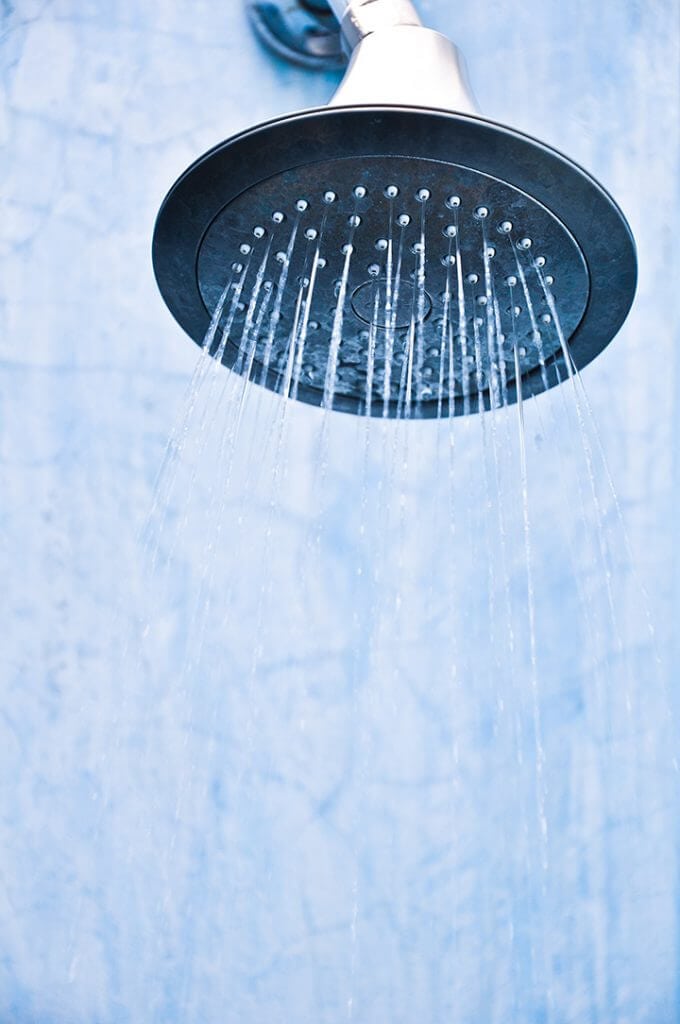 Inside your home, switch to low flow shower heads and toilets that can reduce water usage by up to 5 gallons per flush or shower. High-efficiency faucet aerators mix air into the water stream, lowering water usage by up to 50% and saving hundreds of dollars off of your water bill over their lifetime!
Inside your home, switch to low flow shower heads and toilets that can reduce water usage by up to 5 gallons per flush or shower. High-efficiency faucet aerators mix air into the water stream, lowering water usage by up to 50% and saving hundreds of dollars off of your water bill over their lifetime!
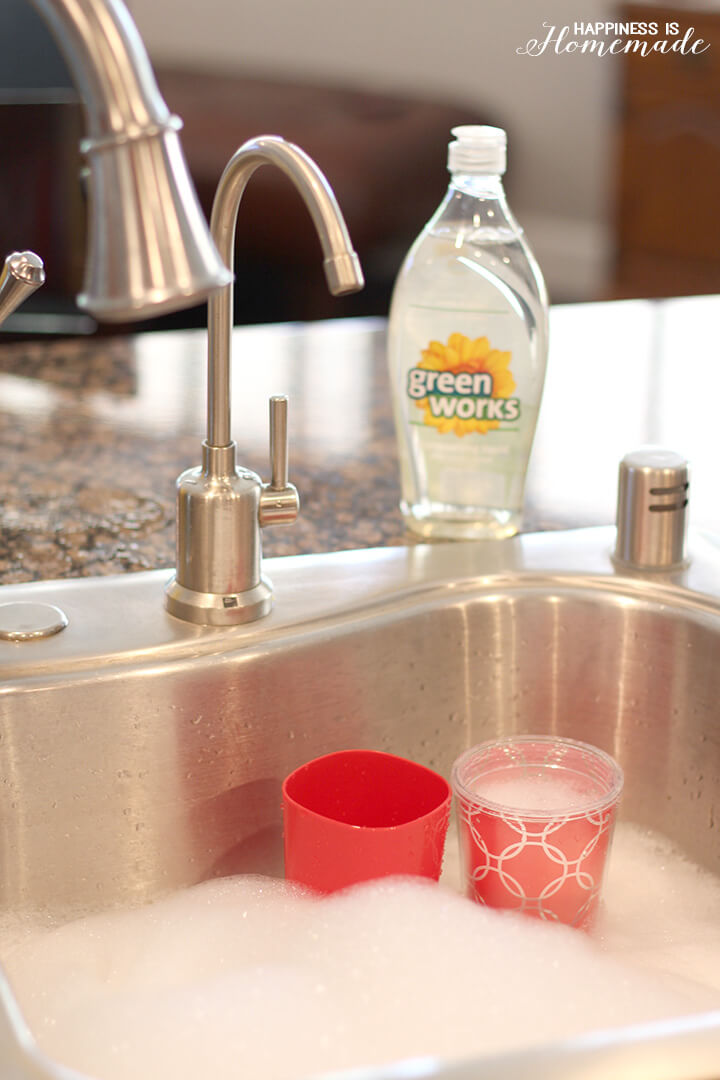 Recycle your dishwater by using an environmentally-safe washing soap like Green Works Dishwashing Liquid to wash your dishes. It’s biodegradable and naturally-derived, allowing you to reuse dishwater for chores like watering the yards or plants. If you get into the habit of recycling dishwater for gardening, you might be able to keep a few of your favorite not-so-drought-resistant plants after all!
Recycle your dishwater by using an environmentally-safe washing soap like Green Works Dishwashing Liquid to wash your dishes. It’s biodegradable and naturally-derived, allowing you to reuse dishwater for chores like watering the yards or plants. If you get into the habit of recycling dishwater for gardening, you might be able to keep a few of your favorite not-so-drought-resistant plants after all!
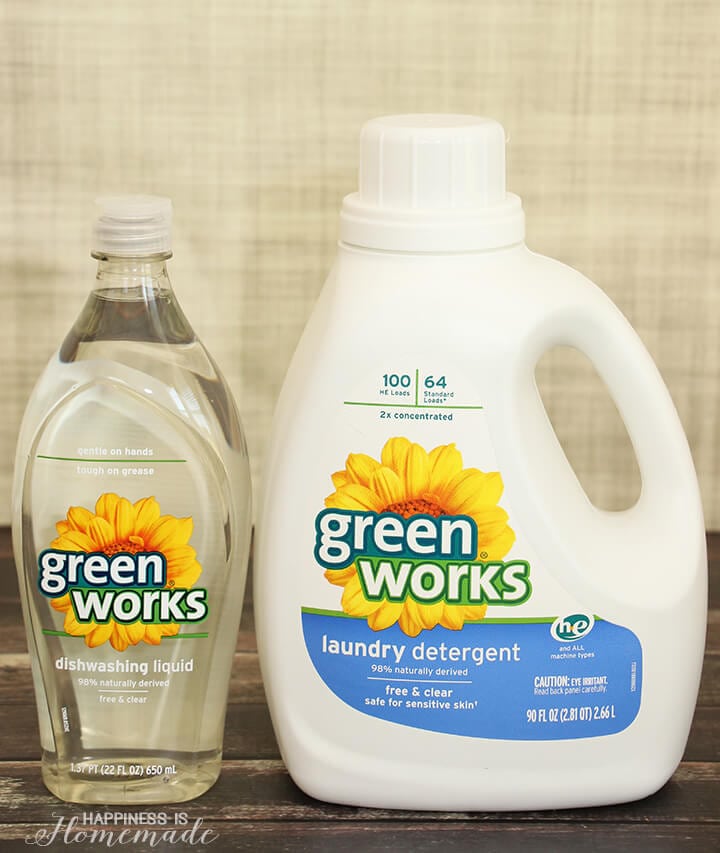 High-efficiency (HE) washing machines require 20-60% less water than traditional washers. Green Works makes a fabulous naturally derived HE laundry detergent that is formulated to be low-sudsing and require less water. Installing a graywater system will allow you to use recycled laundry water for landscape irrigation as well. Nearly 60 percent of a person’s household water footprint can be recycled toward lawn and garden maintenance – wow! Maybe those lush green lawns don’t have to be a thing of the past!
High-efficiency (HE) washing machines require 20-60% less water than traditional washers. Green Works makes a fabulous naturally derived HE laundry detergent that is formulated to be low-sudsing and require less water. Installing a graywater system will allow you to use recycled laundry water for landscape irrigation as well. Nearly 60 percent of a person’s household water footprint can be recycled toward lawn and garden maintenance – wow! Maybe those lush green lawns don’t have to be a thing of the past!
All of Green Works’ products are naturally derived, so you don’t have to worry about harsh chemicals, and they are safe for children and pets. For more information, be sure to check them out on Facebook, Twitter, Pinterest and Instagram.
Do you have any water-saving tips and tricks? Share them in the comments below!
This is a sponsored conversation written by me on behalf of Green Works. The opinions and text are all mine.

Heidi Kundin has captivated the hearts of millions with her colorful and inspiring approach to crafting, celebrations, and family fun. With over 15 years of experience, Happiness is Homemade has become a must-visit destination for those seeking quick and easy creative ideas and last-minute solutions. Heidi’s warm personality shines through her posts, inviting readers to join her on a creative journey that’s fun, rewarding, and achievable. Heidi is also the author of Homemade Bath Bombs & More and DIY Tie-Dye.

